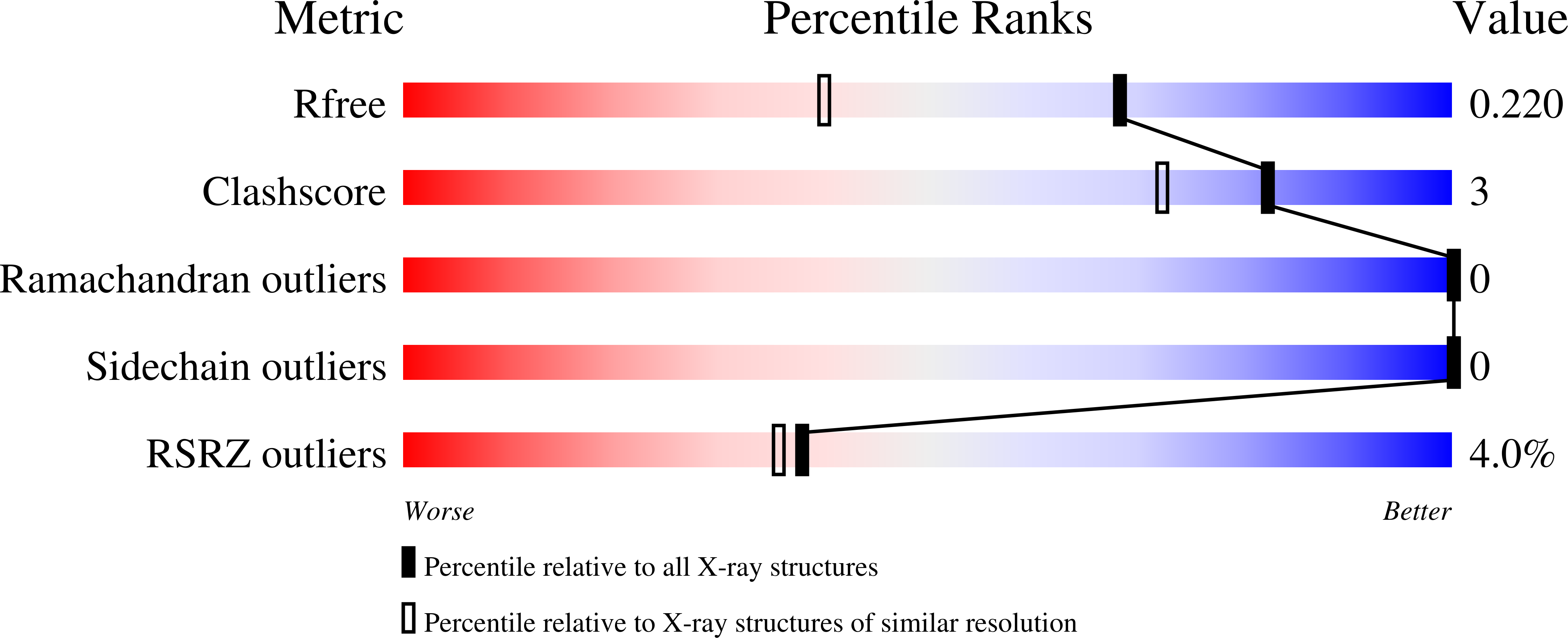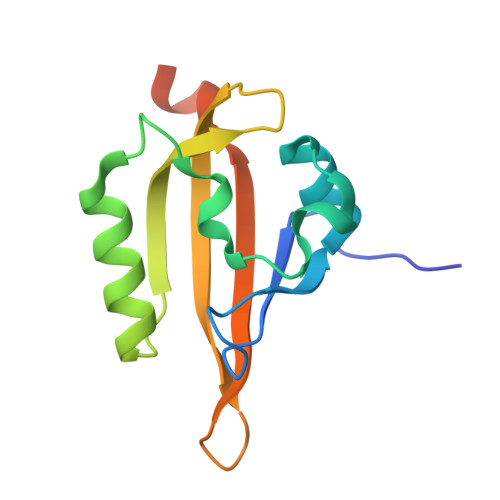The Beta-Scaffold of the LOV Domain of the Brucella Light-Activated Histidine Kinase Is a Key Element for Signal Transduction
Rinaldi, J., Gallo, M., Klinke, S., Paris, G., Bonomi, H.R., Bogomolni, R.A., Cicero, D.O., Goldbaum, F.A.(2012) J Mol Biol 420: 112-127
- PubMed: 22504229
- DOI: https://doi.org/10.1016/j.jmb.2012.04.006
- Primary Citation of Related Structures:
3T50 - PubMed Abstract:
Light-oxygen-voltage (LOV) domains are blue-light-activated signaling modules present in a wide range of sensory proteins. Among them, the histidine kinases are the largest group in prokaryotes (LOV-HK). Light modulates the virulence of the pathogenic bacteria Brucella abortus through LOV-HK. One of the striking characteristic of Brucella LOV-HK is the fact that the protein remains activated upon light sensing, without recovering the basal state in the darkness. In contrast, the light state of the isolated LOV domain slowly returns to the dark state. To gain insight into the light activation mechanism, we have characterized by X-ray crystallography and solution NMR spectroscopy the structure of the LOV domain of LOV-HK in the dark state and explored its light-induced conformational changes. The LOV domain adopts the α/β PAS (PER-ARNT-SIM) domain fold and binds the FMN cofactor within a conserved pocket. The domain dimerizes through the hydrophobic β-scaffold in an antiparallel way. Our results point to the β-scaffold as a key element in the light activation, validating a conserved structural basis for light-to-signal propagation in LOV proteins.
Organizational Affiliation:
Fundación Instituto Leloir, IIBBA-CONICET, Ciudad Autónoma de Buenos Aires, Buenos Aires, Argentina.















